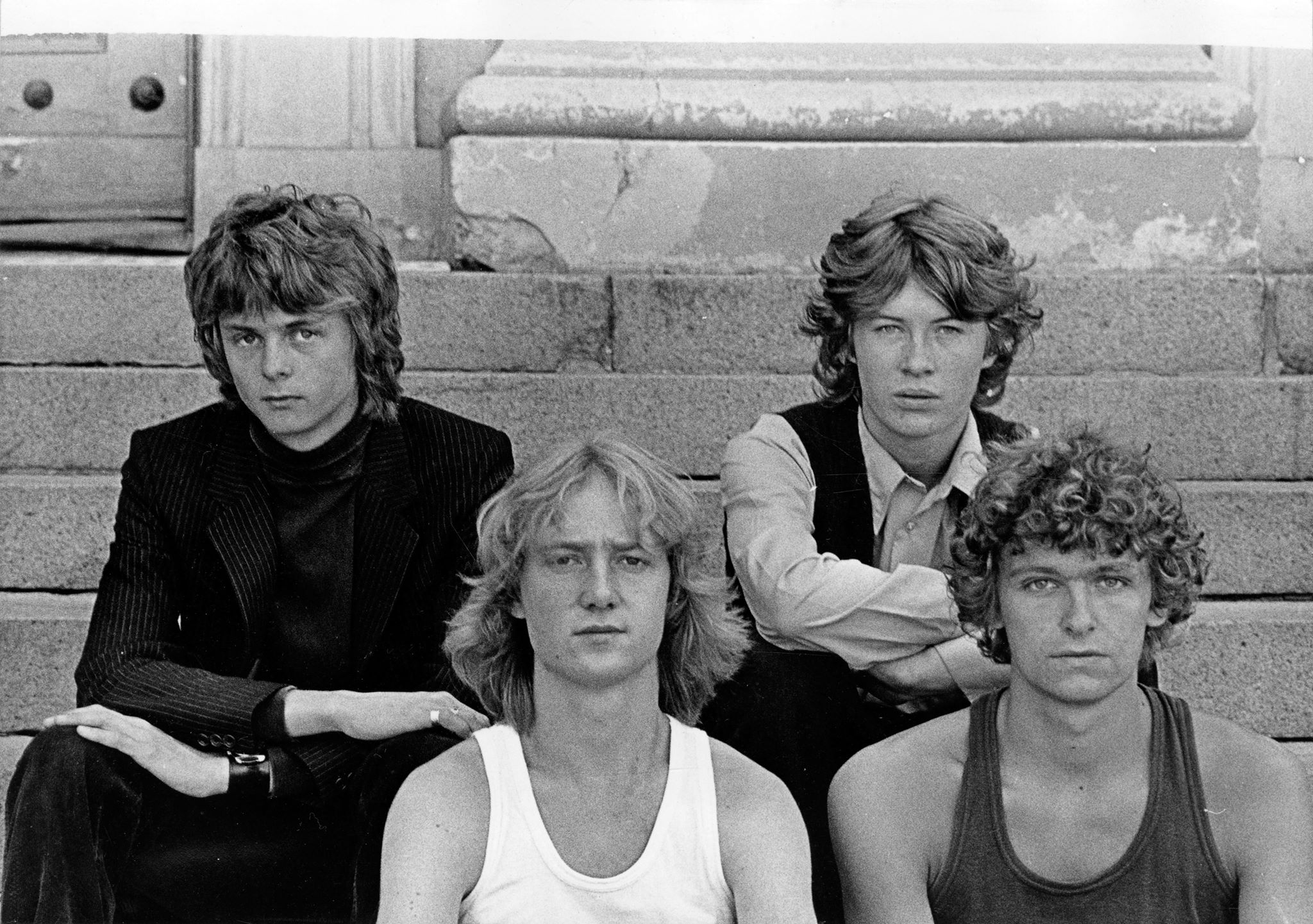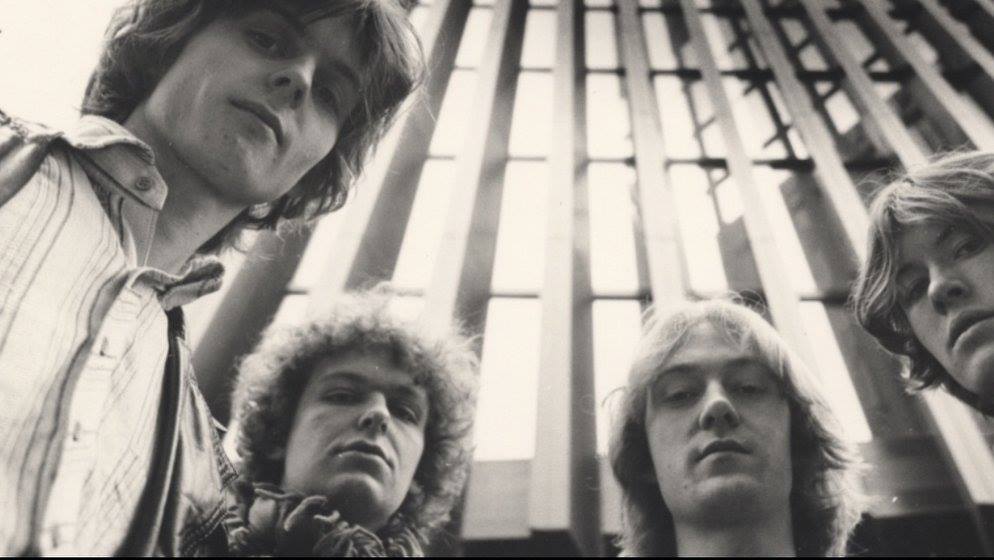Over 37 years since it was first recorded, the near-mythical follow-up to Fakkeltog finally sees the light of day. Guest reviewer Greg Lansdowne offers his verdict on this fascinating document of a-ha’s pre-fame years…
Back in the late ‘80s/early ‘90s I was an avid reader of Record Collector magazine. In those days there was no internet so we sated our thirst for knowledge largely through the written page. My chief reason for buying it every month was to check up on the latest, rare a-ha releases (promo singles, different sleeves and so on). I even advertised in there once upon a time to exchange bootleg concert tapes. It really was a different time.
One item on the ‘for sale’ lists of a-ha-related records was viewed by myself in the same way a child would gaze longingly into a pet shop window hoping their parents would let them buy that adorable, floppy-eared puppy: ‘Bridges: Fakkeltog’.
I didn’t really know a great deal about what those two words signified, but I did comprehend the price to purchase this record was disproportionate to anything else – even more expensive than early releases of ‘Take On Me’.
a-ha fans had learned a little through music magazines that Bridges was the band Pål Waaktaar and Magne Furuholmen had been in before they moved to London and eventually ‘acquired’ Morten Harket in a one-for-two swap with Viggo Bondi and Øystein Jevanord. But few people had actually heard the album – what we assumed was their only album – that translates as ‘torchlight procession’ in English (one of the many fascinating facts magazines such as Smash Hits and Number One helped us to store up on our favourite band).

Over time, cyberspace allowed us the opportunity to listen to the album on platforms such as YouTube, providing a window into early musical influences (it is a law that every article relating to Bridges must mention The Doors) and tasters of songs that would eventually be given the a-ha treatment – even as recently as the MTV Unplugged shows when ‘The Vacant’ was performed under the new title of ‘Sox Of The Fox’.
And so, over time, we consigned Fakkeltog to the annals of a-ha history as part of an extensive catalogue of musical collaborations the three members had been involved with outside of the core structure. By the time we got to the end of 2010 – the climax of the Ending On A High Note farewell tour – we all assumed the future would be focused on Pål, Magne and Morten pursuing their interests inside and outside of music with never the twain meeting.
There would be re-releases, re-packages, special vinyls and perhaps the occasional surprise. But then a-ha re-formed and everything changed. Absence had made the heart grow fonder for many – though not all – a-ha fans and we were keen to lap up anything and everything they could throw at us. A new studio album, Cast In Steel, came out in September 2015, and several tours have followed (along with the aforementioned MTV Unplugged performances).
To commemorate the comeback, a fan convention was arranged for Oslo at the end of April 2016. I was lucky enough to be asked to do a book signing at the event, having had Living A Fan’s Adventure Tale – a-ha through the eyes of the beholders published a few months earlier.
Ahead of that night’s concert at Oslo Spektrum and the fan party that would follow, a series of discussions took place during the afternoon. Outside the venue it was lashing down with rain (perfect weather for Pål’s songwriting!) but inside the sun always shone.
Among the highlights – in truth, all the speakers were stand-outs for a-ha aficionados – was the appearance of former Bridges members, Viggo and Øystein. They talked us through the process of how Fakkeltog was put together and the general story of the band, with the help of a slide show of illuminating images of the four band members back in the day.
What few a-ha fans knew, before Viggo and Øystein regaled us, was a second Bridges album had been recorded. Even better, the recordings were still out there. Even better than that, Viggo had the songs on his phone and he played us a few snippets for our delectation. Whether it was part of a grand plan all along or just happenstance, this set the wheels in motion for the reason I am writing this article.
Våkenatt (which translates as ‘sleepless night’ and is inspired by a Gunvor Hofmo poetry collection from 1954 titled I en Våkenatt) is the upshot of the recording sessions that took place in December 1980 and then partly re-recorded in January 1981 (after some of the original master tapes and Viggo’s precious Gibson Les Paul guitar were stolen over the Christmas holiday period).
At the time, in an attempt to distance themselves from their first album, Pål decided the band should be renamed Poem. As Viggo points out in the liner notes to this lavishly and lovingly produced Våkenatt vinyl and book box set, he always saw himself as being part of Bridges… and so it is there is no reference to Poem on the front of this new package.
Pål’s sister, Tonje, was also among the speakers at the 2016 Convention, so who better to help convince her brother of the desire for this second album to be brought to public attention.
So it was that Pål and Chuck Zwicky mixed the album in New York (using the original studio equipment to maintain authenticity). And, nearly 38 years after the initial sessions, here it is now for our aural delight…and it should not disappoint fans of a-ha and/or the solo pursuits of Pål in particular.

As mentioned above, there was a desire to move away a little from the prog rock/Doors-inspired first album but, as a segue between Fakkeltog the album and Våkenatt the album we get ‘Fakkeltog’, the opening track to the second album (are you keeping up with me?!).
This close to 10-minute first course would have fitted comfortably into the style of the debut album but is less of a sign of things to come on Våkenatt – albeit there remains plenty of experimentation and genre-shifting from song to song (and even between songs) on the remainder of the album.
Prog rock had played a large part in the musical tapestry of the ‘70s but, by the time of Våkenatt’s recording, the clamour for lengthy instrumental interludes was proving less appealing. ‘Fakkeltog’ (the song not the album) works as a valediction to Bridges’ previous self and possesses shades of 10cc at their experimental best, as well as a bit of ‘Paranoid Android’ Radiohead – two bands who few self-respecting musicians would blanch at being likened to.
Next up is the first extra special treat for those keen on the embryonic journey taken by songs that blossomed into a-ha classic. ‘The Leap’ is an early version of ‘Scoundrel Days’ in which the riff would remain more intact than the words over the years. When one considers Pål was a teenage songwriter at this stage of the composition – writing in a second language – it is understandable that some fine-tuning would still be required before its apogee was attained on a-ha’s second album.
Greater similarities are borne to the finished a-ha production on track three, even down to the title staying the same over the years: ‘Soft Rains Of April’. I can’t stress how impressive it is for someone of such a tender age to come up with such an atmospheric and affecting a song at this stage in his career. It seems to have needed relatively little work to adapt this version to that which climaxed ‘Scoundrel Days’ six years later (though I would imagine the three members of a-ha won’t see it that way!). Bridges’ take on the song fades out rather than ending with one final, plaintive, ‘over’ and this experimental work is more reliant on guitar and drums…but that’s technology and changing times for you.
‘Waterworks’ jaunts in with a folky beginning before drifting ethereally into another track that could have easily found its way onto OK Computer.
Track five, ‘All The Planes That Come In On The Quiet’, was also eventually given a makeover, and doesn’t deviate much from the a-ha demo version – albeit the latter was more synth-heavy as Pål and Magne found themselves increasingly influenced by the music that was dominating the UK during the early part of the ‘80s once they’d set up base camp there. Clearly it was a song Pål and Magne felt worthy of persevering with, but it proved to be one that Morten’s vocal talents were not entirely suited to and the latter version is even more ponderous than this effort on Våkenatt. Bridges even threw in a curveball ‘upbeat’ ending, subsequently jettisoned by a-ha, before returning to the initial slower style – perhaps a precursor to the tempo changes on ‘Manhattan Skyline’? A final, spoken, “Quiet” was also a trick later used with “Over” on a-ha’s ‘Soft Rains Of April’ (these chaps seem to know what they are doing!).

‘Asleep’ once more evokes shades of 10cc at their unpredictable best during a country and western-style guitar intro, before sliding back into their comfortable old musical slippers with generally one of the most Doors-influenced songs on the album.
‘Superior’ is altogether rockier, more guitar-led and very much of its time. The liner notes refer to the ‘ska-like rhythms’ of this song and it is no surprise that arguably the most famous ska band of the time, The Specials, had reached number one in the UK with ‘Too Much Too Young’ earlier on in the year (February 1980).
‘Faceless City’ is the older, similarly miserabilist, brother to a-ha’s ‘October’ (“Subway, Sunday, no way, fingers numb/ Faceless city, what are we going to do?” to “Dawn awaits a sleepless English town of coloured grey”). The city/town referred to may be different but misery seeks misery.
‘Need No Doctor’ is one of the songs that could have fitted most adeptly onto a Savoy album, more ballady and, dare I say it, even bordering on commercial – certainly by the standards of a number of the other tracks.
‘Wildfire’ ends the album with further traces of Savoy (I’m thinking ‘Get Up Now’, especially early on, but I may be alone there!). A long instrumental opening slides into lyrics that will again prick up the ears of a-ha fans (“We’ll be chasing our tails madly/ See days pass like wildfire”) and a few more gear shifts before bringing ‘proceedings to a close’ on an unpredictable but never dull album.
If you have the resources to get hold of Våkenatt, do not think twice.
Musically, no one should ever doubt Pål’s attention to detail in cleaning up the original tapes for this limited edition LP. But, on top of that, the 16-page booklet which accompanies the album is beautifully written by The Electricity Club’s very own Barry Page (he didn’t pay me to write that!) and is augmented by a series of evocative images from the era.
Holy Grail, Valhalla, Graceland… call it what you will.
Add Våkenatt to the list of those must-have items for a-ha fans.
For the record, I still haven’t got my copy of Fakkeltog but the longer you wait for something the greater the achievement once you finally get it – Bridges probably feel the same about their second album finally seeing the light of day.
To pinch from another, fairly well-known Scandinavian band, ‘Thank you for the music’.
Greg Lansdowne is the author of Living a Fan’s Adventure Tale – a-ha through the eyes of the beholders, published by Wymer
Våkenatt is released by Rockheim Musical Archives on August 15.
Thanks to Terje Nilsen and Audun Hagen.
- BRIDGES – Våkenatt - August 14, 2018
- Tears From A Stone – Exploring Paul Waaktaar-Savoy’s New Biography - October 6, 2017










